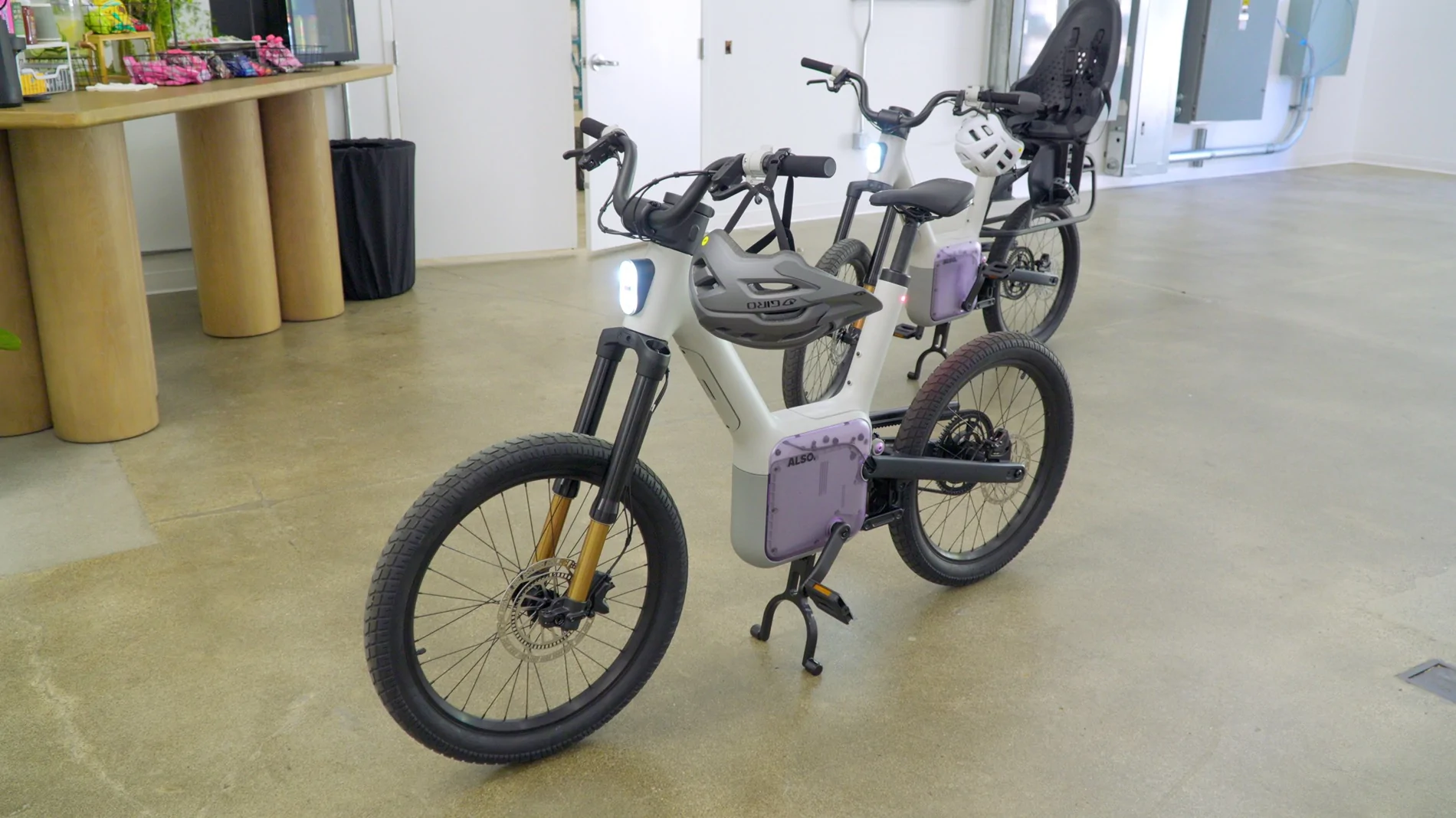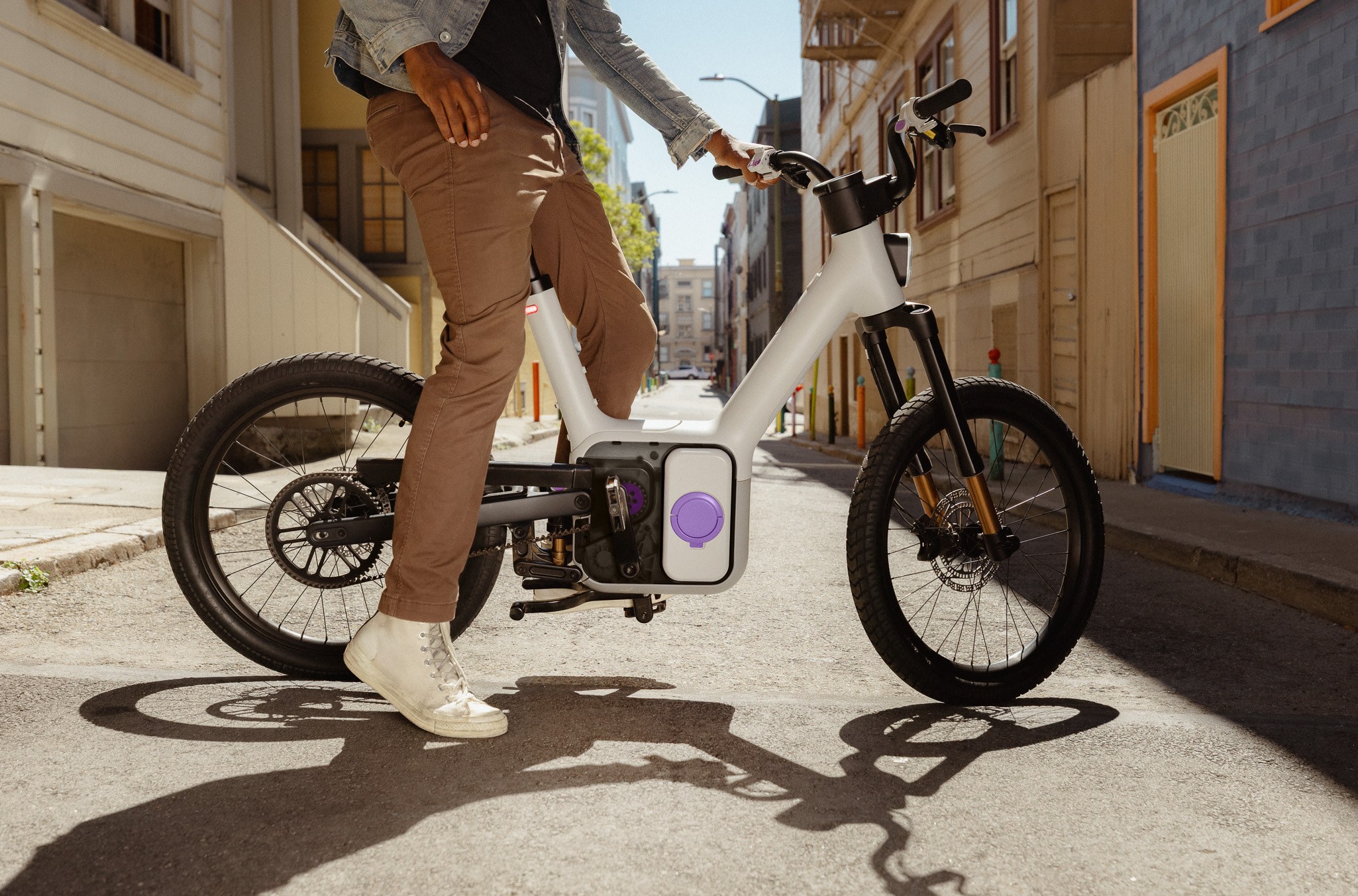Also has unveiled the TM-B, a premium e-bike that costs $4,500.
Positioned as more than just a standalone model, the TM-B serves as the base of an extended platform that merges automotive-quality electronics with a utility-forward design for commuters, families and last-mile pros.
- A micromobility platform built with in-house electronics
- Swap modular frames and seats in seconds without tools
- Security and software shape the ride and deter theft
- Performance and range options across multiple TM-B trims
- Where the TM-B fits in today’s premium e-bike landscape
- Ecosystem and initial use cases beyond the bike itself

A micromobility platform built with in-house electronics
Instead of purchasing off-the-shelf drivetrains as most e-bike manufacturers do, Also made core systems in-house: the removable battery pack, power electronics, firmware and a pedal-by-wire propulsion system. This “series-hybrid” design separates pedaling from wheel motion, which allows for fine-grained control and software-driven ride modes as well as regenerative braking — capabilities that are more commonly seen in custom e-bikes than those made for the general public.
Possessing the stack also makes over-the-air updates and long-term support easier, a lesson borrowed from the EV world. It stands in stark contrast to the industry’s dependence on third-party controllers and motors from suppliers like Bosch or Bafang, whose update cadence and feature scope can be limited by external roadmaps.
Swap modular frames and seats in seconds without tools
The TM-B’s most novel feature is a top-frame module that lets the bike switch from solo to bench to utility cargo without the use of tools. Adding to that, the standard solo seat comes with dual bottle mounts, and if you opt for the utility setup the integrated rear rack will haul about 77 pounds of additional cargo. A bench alternative is intended as a school run or quick errand option, transforming the e-bike into a small people mover.
And it couples that modularity with commuter-minded visibility: integrated front and rear LEDs, turn signals, and “biomotion” lighting to light up the rider’s legs for added conspicuity. A study cited by road-safety groups indicates that illuminated limb motion is easier to register for drivers than a mere pair of blinking lights — small details, but considerations in traffic-clogged city life.
Security and software shape the ride and deter theft
Between the bars, there’s a center touchscreen that serves as a foundational anchor for ride data, navigation and security — turning them into one portal.
Walk-away locking grips the battery, wheels and frame to let you know when something’s afoot (LTE works with GPS to alert you, also adding an audible scream). The electronics are custom-designed, so the system can cut remote power to vital parts end-to-end — discouraging chop-shop reuse while providing actual hope to owners whose rides vanish.
It also serves practical features, like more accurate arrival times. Assist level, FIFO speed history and load can all be taken into account on that sensor to provide real-world ETAs rather than generic ones.

Performance and range options across multiple TM-B trims
The TM-B is available in a number of trims. Launch and performance models are spec’d with a claimed range of 100 miles, 10 assist levels, air shocks mated to an air fork, and two ride modes that include a sport setting. A less expensive base model goes after 60 miles of range with five assist levels and an air shock mated to a coil fork. Every trim level is pedal-assist, with a maximum speed of 20 miles per hour — consistent with Class 1 regulations that most U.S. bike lanes and multi-use paths adhere to.
Twenty-four-inch wheels help keep the standover low and handling snappy, a good compromise when you’re hauling cargo on congested city streets. Optional all-terrain tires and a trail mode add flexibility for riders who share time between pavement and park paths. Its removable battery also doubles as a power bank with USB-C output up to 240 watts, sufficient for fast-charging laptops or powering camping gear in the wild.
Where the TM-B fits in today’s premium e-bike landscape
Priced at $4,500, the TM-B sits in the upper echelon along with performance commuters from Specialized and city bikes that do far more integrated things with their frames than American ones (I’m looking at you, Europe).
Where it veers away from the mainstream is in its automotive-style electronics architecture and rapid reconfigurability — two areas where established competitors still rely on modular third-party components.
Context is important: U.S. e-bike dollar sales were on a serious tear in recent years, up by triple digits from 2019 to 2022, says Circana’s report; robust volumes are projected to continue as cities invest in protected lanes, according to the Light Electric Vehicle Association. While urban policies favor 20 mph Class 1 assist limits and bike- and scooter-friendly infrastructure, Class 1 designs often have fewer restrictions than throttle-equipped models, a benefit to commuters and fleet operators.
Safety expectations are rising, too. Fire departments and building managers are applying more scrutiny by demanding UL 2849 system and UL 2271 battery certifications. Also not specified in this announcement are certifications, though compliance with those will be important for apartment access, workplace parking and commercial deployments.
Ecosystem and initial use cases beyond the bike itself
Also’s world lives beyond the bike. Its developed in-house Alpha Wave Helmet also features rotational impact technology, as well as integrated lights, four wind-shielded speakers and dual noise-canceling microphones. Alongside the bike’s own touchscreen or a phone, riders can pick up calls and stream audio all without any other mounts or dangling cables.
The company has also teased compact quad types — a sign that the TM-B is the opening node in a small-array microplatform stretching from personal to commercial mobility. With a modular rack, attached anti-theft suite and more inside, along with the series-hybrid drivetrain, the TM-B looks like a fleet-tamed commuter bike. For families, couriers or riders who are replacing a second car, that intersection of utility and software may be the selling proposition — not just the spec sheet.

